Growing Phlox in Sun through Shade
Growing phlox in an ornamental garden is a piece of cake. There’s literally a perennial species for every sunlight level, and not one of them requires any fuss. The three kinds that I grow have never caused an ounce of trouble, and they’ve delivered a ton of awesome color and super lush greenery year in and year out. Whether it’s growing in sunshine or in shadow, phlox most definitely rocks!
By John G. Stamos
Table of Contents
Introduction to Growing Phlox
This article’s all about growing phlox. Specifically, three different species of Phlox. To get the ball rolling here, I’ll ask you to note the capitalization and the italicized letters in my second use of the word in this paragraph, and its lowercase form in the first. These are not typos. In terms of taxonomy, the genus name for phlox is Phlox. In terms of what everybody who likes to garden calls them, it’s just plain “phlox,” which, unless we’re talking scientific nomenclature, is how I’m going to refer to them here. Got it? Cool.
But let’s get a little of that scientific nomenclature talk out of the way right now. The word “phlox” comes from Ancient Greek, and means “flame,” and when these plants are in full bloom, they’re as blazing bright and as attention-grabbing as 5-alarm fire. (So far, the nomenclature works, right?) The eye-arresting, fiery genus Phlox belongs to the plant family Polemoniaceae, and includes 68 separate species (most of which are found throughout many parts of North America), and an almost limitless amount of subspecies, cultivars, and hybrids within a number of those species.¹ The upshot is that Phlox is a pretty big genus with a whole bunch of brightly-bloomed, different-colored, different-shaped, and different-sized flowering plants in its stable.
To most people involved in any kind of ornamental gardening activity, phlox are no strangers. In fact, here in my own Michiana Shores USDA hardiness zone of 5B/6A, on the border of Indiana and Michigan, phlox are not only massive sellers in the retail nursery trade, at least two species (that are found in so many ornamental perennial gardens) are also fairly widely occurring native perennials.² So, green-thumbed members of the populace, at least in my part of the Midwest, know about phlox. But phlox, in even its most common iterations, may be new to some of you, particularly if you yourselves are also new to the activity of gardening at large. In either case – whether you’re an old hand or a newbie – you might find this article of use.
Here’s why.
Even though phlox are famously simple to grow, different phlox species do often have correspondingly different sunlight requirements. In fact, some can be really, really, really sensitive to sunlight conditions (a fact I learned the hard way several years ago). But some species are less sunlight-choosey than others. I grow representatives from three different phlox species in my garden, and after years of getting to know all of them, I know what works for each one, and what doesn’t. In this article, I’m gonna lay what I know on you about keeping creeping phlox, woodland phlox, and garden phlox happy, and explain which of these is the most flexible in terms of the amount of sunlight it needs. I’ll give you the nuts and bolts of each of these species, including its basic characteristics, my own notes from the field, general planting suggestions, and info on continuing care. I’ll dial you into four excellent product recs (three for your phlox, and one for you). Finally, you’ll get a bibliography/for further reading list in case your curiosity about phlox extends beyond the parameters of this article. So, planning on growing phlox? It’s as easy as pie, but keep it right here for the goods on making the whole thing even easier.
Growing Phlox in Full Sunlight: Creeping Phlox (Phlox subulata) Nuts and Bolts
The Basics
Common name – creeping phlox, or moss phlox. Botanical name – Phlox subulata.³⁻⁴ Plant family – Polemoniaceae. Height – 2″-6″. Spread – 12″– 24″. Light – full sun. Bloom color – blue, white, pink, or red, depending on the cultivar. Bloom size – 3/4″-1″ wide, 5-petaled. Bloom time – spring. Foliage – woody-stemmed, semi-evergreen to evergreen, needle-like leaves, rich green in color. Hardiness – zones 2–9. Root system – extensive, comparatively shallow, stoloniferous. Soil – moist, well-drained, neutral to slightly alkaline. Growth rate – moderate. Pollinators – bees, moths, and butterflies. Toxicity – non-toxic to people and pets. Pest resistance – excellent. Not bothered by mammalian pests like deer, voles, or chipmunks. No slug damage, but can be susceptible to spider mites in my garden. Good fungus and pathogen resistance. Longevity – years and years – they’re considered long-lived perennials. Propagation – stem cuttings, seeds.⁴⁻⁵
Notes from the Field: These Phlox Need Full Sun!
No doubt about it. Phlox subulata needs full sunlight to flourish. At least 6 hours worth every day. These plants also need good air circulation and do not like to be crowded by taller, broad-leafed plants. I’ve killed a few of mine by planting them too close to (and essentially beneath) taller hostas and coral bells, where they were deprived of sunlight and smothered by the bigger leaves of those taller, larger plants.
Phlox subulata is a rugged, cold-hardy plant that stands up to a modest amount of foot traffic, is really pretty drought-tolerant once established, and does a good job of weed suppression. It also provides excellent cover for small amphibians in my garden like toads and tree frogs. It can get a bit rangy, with main stems becoming somewhat woody, so pruning and shaping as discussed below can be beneficial.
The plant does well as an underplanting groundcover as long as its taller companion featured plants don’t deprive it of sunlight and/or air circulation. For more on how Phlox subulata performs in a groundcover role, please read my RGG article from 2022, “7 Super Perennial Groundcovers for Sun, Shade, and More.”
Phlox subulata is not to be confused with another species of creeping phlox, Phlox stolonifera,⁶ to which it is similar in many ways, such as approximate appearance and growth habit. The key difference between the two species is each one’s sunlight requirements. While Phlox subulata requires full sun to thrive, Phlox stolonifera is a shade lover.
Suggestions for Planting Creeping Phlox
- You can plant these as early as late winter. If your plants are coming from a reputable online nursery, you’re going to get them at the proper planting time for your zone. Which will more than likely be late winter or early spring. The same goes for plants purchased at your local retail nursery. They’re going to have them available for you to plant when the time is right for your zone. The bottom line here is, these plants are ready to go into the ground while it’s still fairly cold. They’re definitely really cold hardy.
- Planting depth and spacing. Make the hole several inches deeper than the root ball and about twice as wide. Phlox subulata doesn’t root too deeply, but those roots and stolons sure do spread. Make sure to provide ample spacing between other plants to allow creeping phlox to do its creeping thing.
- Soil. These plants like well-drained, neutral or slightly alkaline soil. I planted mine in my usual slightly acidic potting soil which I amended slightly with one of the product recs listed below. Aside from their initial dose of built-in fertilizer in the potting soil, these plants have never been fertilized. If they continue to grow and thrive, I probably will not fertilize them.
- Water. Give these plants a good solid soaking when you first bed them, then give them a consistent twice-weekly watering for the next few weeks. Creeping phlox demonstrates pretty good drought-tolerance once its established. Even after the hottest and dryest summer days, mine have remained green, healthy, and wilt-free. That being said, if you don’t absolutely need to deprive your creeping phlox of water, then don’t. They definitely appreciate a decent amount of soil moisture. As with so many other perennials, however, soggy, non-draining soil will kill creeping phlox.
- Plant it in a full-sun location. Make sure your new Phlox subulata plants are going to end up in a spot where they’ll receive at least 6 hours of direct sunlight per day. If you’re planting them during the late winter or early spring, any surrounding shade trees probably will not have sprouted their foliage. Successfully growing phlox of the creeping subulata kind implies anticipating potential developing shade conditions, and then avoiding them like the plague when you decide on a planting spot.
- Companion planting. Plant Phlox subulata as a groundcover at the front of a sunny border, away from taller, broad and densely-leafed plants that could smother them and deprive them of sunlight. Use them as underplanting groundcover for longer-stemmed, less densely-leafed featured plants like hybrid tea roses or certain echinacea varieties.
Creeping Phlox Continuing Care
- Pruning and deadheading. Deadheading spent blooms won’t do anything for generating new ones during the current growing season, but pruning the branches and stems (which become woody as the plant matures) will help maintain the plant’s shape, encourage the development of new current season foliage, and set the stage for more profuse flowering during next year’s growing season.
- Fertilizing. Beyond the modest amount of fertilizer that’s mixed into the potting soil product I used to bed my Phlox subulata, I can’t honestly say that I’ve ever fertilized them. But I won’t discount the benefit of doing so. The remarkably effective organic granular product I use for my other phlox species (which you’ll encounter in the product recommendations section below) would undoubtedly give them a boost in terms of flowering, foliage appearance, and overall health.
Growing phlox, specifically the creeping Phlox subulata version, is highly rewarding, as it’s a lovely groundcover and a wonderful underplanting companion to taller featured plants. And growing phlox members of this wonderful species is also simple, because now, you know how. And don’t forget: For these guys, it’s sun, sun, sun!
Growing Phlox in Shade: Woodland Phlox (Phlox divaricata) Nuts and Bolts
The Basics
Common name – woodland phlox, wild sweet William. Botanical name – Phlox divaricata.⁷ Plant family – Polemoniaceae. Height – up to 16″. Spread – 12″– 16″. Light – partial shade to mostly shade. Bloom color – usually shades of blue, but can be pink, or white (depending on the subspecies/cultivar). Bloom size – 1″-1-1/2″ wide, 5-petaled. Bloom time – mid spring. Foliage – Phlox divaricata produces both flowering (fertile) and non-flowering (infertile) shoots.⁷ The non-flowering shoots arise from stolons, allowing the plant to spread. The stems are hairy and sticky, and the leaves are either lanceolate (more common) or elliptic in shape. The foliage can be evergreen to semi-evergreen in warmer climates. Rich, deep green in color. Herbaceous in my hardiness zone of 5B/6A. Hardiness – zones 3–8. Root system – extensive, comparatively shallow, stoloniferous. Soil – moist, well-drained, neutral to slightly acidic. Does best in soils rich in organic matter, but can tolerate soils of varying composition. Mine perform best in rich, slightly acidic soil. Growth rate – moderate. Pollinators – bees, moths, and butterflies. Toxicity – non-toxic to people and pets. Pest resistance – very good. Some mammalian grazers (deer, rabbits) may target the foliage. Little to no slug damage, and generally excellent fungal and pathogen resistance, but can be susceptible to powdery mildew. Longevity – 10 years, but often much longer – they’re considered long-lived perennials. Propagation – division, stem cuttings, root cuttings, seeds.⁷
Notes from the Field: These Phlox Love Shade!
Woodland phlox is one of the two phlox species that grows as a fairly pervasive native plant in many fairly to heavily-wooded regions of the Midwest, and certainly in the densely wooded part of the Midwest where my garden grows. As a native, forest-dwelling perennial, these plants love shade. And the members of my garden’s woodland phlox population are no exception.
The several, slowly spreading clumps of woodland phlox that have become established in my garden do beautifully in partial shade to mostly shade conditions. The very few times I’ve planted individuals in mostly sunny locations, I was forced to almost immediately relocate them to shadier spots because they started to wilt and wither.
I originally planted my Phlox divaricata as small, potted specimens purchased from a nursery relatively early in the spring, several years ago. It grows beautifully in several shady locations in my garden’s “Blue and White Hill” planting feature, where it has any number of taller plants, for neighbors, such as white old-fashioned bleeding hearts, Virginia bluebells, smooth and bigleaf hydrangeas, and even some taller garden phlox. It also grows beautifully in close proximity to Spanish whitebells.
My woodland phlox is very happy in the rich, moist, well-draining soil in which it’s bedded, and, since it’s been established, has been remarkably drought-tolerant.
Once its bloom cycle is over, it tends to sort of “fade into the background,” although I don’t consider it to be ephemeral. Its rich, green lance-shaped leaves remain intact throughout the entire summer, and begin to yellow and die back toward the early to mid part of fall.
While it’s blooming profusely in mid through later spring, its lovely lavender blue flowers contrast beautifully with those of its white-flowered neighbors, and they seem to actually “glow” in my garden’s shadier sections.
The Renaissance Garden Guy is a participant in the Bluehost affiliate program. The Renaissance Garden Guy earns a fee/commission each time a visitor clicks on a Bluehost ad or banner in this site and makes a subsequent qualifying purchase. For more details, and for a full list of this site’s affiliate partners, please visit The Renaissance Garden Guy Disclosure page.
Suggestions for Planting Woodland Phlox
- You can plant these in relatively early spring in hardiness zone 5B/6A. Potted Phlox divaricata specimens will be available from local or online nurseries at the proper planting time for your hardiness zone. This will more than likely be in the early spring. And that’s the perfect time to plant them – they’ll immediately begin to establish their root systems, and will develop a number of their fertile shoots in time for mid spring blooming.
- Planting depth and spacing. As with other phlox species, woodland phlox doesn’t root too deeply, but it does spread via its network of roots and stolons. Make the hole for an individual plant several inches deeper than the root ball and twice as wide. Make sure to give it at least 16″ of distance, center-to-center, from other woodland phlox specimens.
- Soil. These plants like well-drained, neutral to slightly acidic soil. I planted mine in my usual slightly acidic potting soil, to which I added an application of the organic granular fertilizing product referenced in the product recommendations below. Since these plants naturally occur in wooded or forested areas (as their common name implies), they grow in soil that’s enriched by decomposing fallen tree leaves and beneficial fungi and microbes that dwell in the ground beneath the forest floor. It therefore follows that fertilizing them – either with the excellent organic product I use, or with an adequate compost mixture – is highly benefical to their health and beauty. In all cases, it’s critical that the soil is well-draining.
- Water. Give these plants a good soaking at the time of their planting, then keep them on a consistent twice-weekly watering regimen for the next several weeks until they become established. It’s best not to let them extensively dry out during their first growing season. Once they’re established, Phlox divaricata is actually pretty drought-tolerant. Not surprisingly, soggy, non-draining, waterlogged conditions will kill these plants.
- Plant it in a partial shade to mostly shady location. Don’t plant these in full sun!!! They hate it, and will quickly wilt and become immediately miserable. They grow naturally in the understory of forests, so they’re used to all levels of shade and limited, dappled sunlight. Make sure to locate your new Phlox divaricata plants in areas of your garden that approximate these conditions! Growing phlox of this species successfully requires the proper growing location that affords them enough shade and protection from any level of sustained direct sunlight.
- Companion planting. Growing Phlox subulata in the proximity of taller shade-loving perennials like smooth and bigleaf hydrangeas, Virginia bluebells, old-fashioned bleeding hearts, toad lilies, astilbe, ferns, and even shade-tolerant garden phlox works like a charm. And shorter shade-tolerant perennials like trillium, Mukdenia, Spanish bells, liriope, and small hostas work great as neighbors for woodland phlox, too.
Woodland Phlox Continuing Care
- Pruning and deadheading. Nah. Just cut them back to the ground in the fall when they turn yellow and brown and start to die back.
- Fertilizing. As discussed above, growing Phlox divaricata to be the absolute best it can be is going to involve some fertilization. Whether you do a regular application of an excellent organic granular food (and, as discussed, an application of this type of product at initial bedding), or a sustained regimen of composting, your woodland phlox is going to thank you, and repay you with profuse springtime blooming, and all spring and summer-long healthy, attractive green foliage.
So gang, if you end up growing Phlox divaricata, and you do it just like I laid it all out for you here, you’re going to have some really beautiful blooms beaming up at you from within the shadier reaches of your gardens in the springtime. It’s a pretty damn cool situation.
Growing Phlox in Full Sun, Partial Shade, and Everything in Between: Garden Phlox (Phlox paniculata) Nuts and Bolts
The Basics
Common name – garden phlox, tall phlox, summer phlox. Botanical name – Phlox paniculata.⁸⁻⁹ Plant family – Polemoniaceae. Height – 2′-4′. Spread – 2′-3′. Light – full sun to partial shade (I’ve even got a clump or two growing and blooming in mostly shady locations). Bloom color – varies with the subspecies/cultivar/variety. Bloom size – individual flowers are 3/4″-1″ in diameter, and 5-petaled. Flower clusters, or panicles, can be up to 8″ across. Bloom time – late spring through early fall. Foliage – clump-forming, herbaceous (though sometimes basal clumps persist throughout the winter) with rich, green lanceolate, elliptic, or ovate leaves. Hardiness – zones 4–8. Root system – extensive, comparatively shallow, stoloniferous. Soil – moist, well-drained, slightly acidic to slightly alkaline. Growth rate – moderate. Pollinators – bees, moths, butterflies, and hummingbirds. Toxicity – non-toxic to people and pets. Pest resistance – very good. Can potentially attract mammalian grazers like deer and rabbits. No slug, vole, or chipmunk damage, but can be susceptible to powdery mildew in my garden. Otherwise, good fungus and pathogen resistance. Longevity – individual plants live years and years – they’re considered long-lived perennials. Clumps of Phlox paniculata can persist in a garden for decades. Propagation – division, stem cuttings, seeds.¹⁰
Notes from the Field: Garden Phlox Loves Sun, but It Can Definitely Handle Some Pretty Serious Shade
Surprise, surprise… garden phlox – probably the most popular and best known of all the Phlox species grown in ornamental gardens¹¹ – can be grown in at least partially shady light conditions, despite popular opinion that holds that they’re only sun-lovers. I’ve even got a few clumps growing in mostly shady spots in my garden – and they still bloom pretty damned beautifully. Now, tell me that this fact doesn’t make the process of growing phlox even more of a no-brainer than you ever thought it could be. Hell, you can pretty much grow these plants (practically) wherever you want.
Trust me on this point, girls and boys. Although it’s generally believed that Phlox paniculata, when it’s growing in a full-on sunny location, will flower more profusely than when it’s growing in a shadier spot, a number of my own clumps of garden phlox are blooming beautifully where the sun don’t shine. At least where the sun don’t shine too brightly. When I tell you that growing phlox is a piece of cake, all I need to do is point to the non-fussy general habits and lax light requirements of the amazing Phlox paniculata to back me up.
Virtually all of the Phlox paniculata that grows in my garden was planted nearly six years ago as comparatively small, potted individuals throughout various locations in a couple of different planting beds. These individual plants have formed slowly spreading clumps – thickets, actually – that have established themselves in locations of varying sunlight levels. My garden phlox literally grows in all parts of its respective planting beds – from full sun to mostly shade. And it’s happy and flowering profusely everywhere it finds itself growing.
Listen. I’m a lazy guy. I hate having to fuss with the stuff that grows in my garden any more than I absolutely have to. Growing phlox – especially garden phlox – is about as easy as it gets.
Suggestions for Planting Garden Phlox
- You can plant these from mid spring through early fall in zone 5B/6A. As always, if your plants are coming from a reputable local or online nursery, you’re going to get them at the proper planting time for your zone. But these plants are amazingly adaptable in terms of when you actually can get them bedded. I’ve planted various garden phlox cultivars and hybrids in the early fall that had been stewing in their original nursery pots for a good part of spring and all of summer, waiting for me to get off my ass and deal with them. There are so many different cultivars, hybrids, and varieties of garden phlox offered for sale at so many different points throughout the spring and summer, it would be impossible, impractical, and ultimately unnecessary for me to try to give you a hard and fast planting schedule for every one of them. Just remember that they’re all flexible and forgiving in terms of when you get around to planting them. For me here in hardiness zone 5B/6A, the planting time sweet spot is extensive: mid spring through early autumn (at least a few weeks before the first frost).
- Planting depth and spacing. Like so many other phlox species, Phlox paniculata’s root system isn’t terribly deep, but it is extensive. Couple this info with the fact that it spreads by stolons, as well as fairly aggressive self-sowing, and you’ll realize that you’ll need to give individual plants plenty of space to spread out. Follow the grower’s spacing directions on any new plants’ info tags. That distance will vary by cultivar and variety. But bear in mind that these plants solidly establish themselves in slowly but inexorably spreading clumps. In terms of hole size, you can’t go wrong if you make it a several inches deeper than the root ball, and twice as wide.
- Soil. Garden phlox likes well-drained that hovers between slightly acidic to slightly alkaline. Anywhere between 6.0 and 8.0 on the pH scale is generally fine. Mine mostly grow in dirt that reads about 6.5, but a few clumps grow in areas where the alkalinity reads a bit over 7.0. In both cases, they grow and flower beautifully. As I do with all new plantings, I planted mine in my usual slightly acidic potting soil, which I amended with the excellent organic granular fertilizer referenced in the product recs section below.
- Water. Give garden phlox a good solid soaking when you first bed them, then give them a consistent twice-weekly watering for the next few weeks, and then one good soaking per week after that for the rest of the growing season. If planted in full sun locations, particularly in warmer climates, the watering frequency can be increased. Once they’re established, however, they’re incredibly drought-tolerant, though they may periodically droop in hot sun. Attempting to grow garden phlox in soggy, non-draining soil will result in stem, root, and crown rot, and will ultimately kill the plant.
- Plant it in a full-sun location as your first choice, but they’ll still do fine in some shade. As I’ve been saying all along, even though garden phlox thrives in full sun (at least 6 hours per day of direct sunlight), they thrive and flower beautifully in partial sun, partial shade, and even mostly shade conditions. Mine definitely do.
- Companion planting. Garden phlox grows equitably with any number of back border, mid border, and, in the case of shorter-growing cultivars, front border plants. In my garden, Phlox paniculata grows beautifully with tall hyssop, salvia, speedwell, triplet lilies, and hydrangeas in one planting feature, and they beautifully complement corydalis, tall shasta daisies, echinacea, butterfly weed, liatris, and yarrow in another .
Garden Phlox Continuing Care
- Pruning and deadheading. When it comes to deadheading, I’m mainly on the “Nope” side of the fence, although I have, at various times in the past, done some deadheading of my garden phlox, particularaly the members of my ‘Fashionably Early Flamingo’ colony. What did it accomplish? Not much. It prevented a little bit of self-sowing, and maybe ever so slightly encouraged additional blooming beyond their initial flush of flowers. But these typically rebloom anyway, even without the deadheading. From a practical standpoint, since I’m growing Phlox paniculata in such enormous colonies, and often in really hard to reach places in my garden, I no longer bother even thinking about deadheading these plants. Without my doing any deadheading of the Phlox paniculata plants in my garden, the cultivars that are known as rebloomers still do, in fact, rebloom, and all cultivars are free to massively self-sow. In terms of pruning my garden phlox, I cut it back to the ground in late fall after virtually all of the aerial foliage has turned brown and withered, and, in some cases, even in late fall through winter, green basal foliage does persist after cutting all that dead brown stuff back.
- Fertilizing. In addition to mixing in an appropriate quantity of a high-quality granular organic fertilizer with the dirt I use to initially bed my garden phlox (as I described in the previous section), a regular, ongoing application of that excellent plant food, per the manufacturer’s directions, works wonders for my garden phlox in terms of bloom profusion and foliage health and appearance.
Note: I’ve got several different cultivars/hybrids of Phlox paniculata growing in my garden, including Phlox ‘Fashionably Early Flamingo,’ Phlox ‘Fashionably Early Crystal,’ Phlox ‘Opening Act Pink-a-Dot,’ Phlox paniculata ‘Laura,’ and more. They all do well in full sun through partial (and even more) shade and are simple to care for. They’re the proverbial poster children for my ongoing “Growing Phlox is a No-Brainer” campaign!
Growing Phlox: Product Recommendations to Help You Do It
Despite the fact that growing phlox is an extremely simple endeavor, there are a few products that you can use to stupid-proof the process and make the whole experience even easier (and more beautiful). And, hey, there’s a product here for you, too (once you’re finished digging and planting and getting filthy, you’ll more than likely want to purge yourself of all the crap that finds itself attached to you – this is the stuff that’ll help you do it).
Luster Leaf Rapitest 4-way Soil Analyzer. I bought this Luster Leaf Rapitest 4-way soil analysis meter in February of 2022 and have used it successfully time and time again since then to test for soil fertility and pH levels. It also measures sunlight and soil moisture levels. It’s fast, easy to use, convenient, and accurate. By using this device, I’ve been able to determine the necessity of appropriate fertilizer applications and pH amending to the soil of a large number of the plants in my garden. Order it here, directly from Amazon, by clicking the #advertisement link. Note that this unit doesn’t test for iron levels in soil. Also note that I really love this little meter!
Espoma Organic Garden Lime. Espoma Organic Garden Lime is the perfect product for increasing alkalinity levels in soil. It can be mixed with the bedding soil, or used to top dress soil around plants which are already in the ground. I use this to amend the soil of any of my plants with a preference for alkaline pH levels, like my hellebores. Order this product here, from Amazon, by clicking the #advertisement link.
Espoma Organic Plant-tone. I am a huge fan of Espoma’s line of organic fertilizers. Plant-tone is the one I use for the majority of the plants in my garden. It’s got an N-P-K ratio of 5-3-3 and is a great all-purpose organic fertilizer. It works perfectly for an incredibly wide variety of ornamental plants. Again, Espoma Organic Plant-tone is the food that a huge number of my plants get. They love it, and it shows. You can order this product here, directly from Amazon, by clicking the #advertisement link.
Beesential Gardener’s and Mechanics Small Batch Bar Soap. First of all, there’s no apostrophe in “Mechanics.” It’s how they really spell it. Now for the nitty-gritty… this stuff is all natural, contains fresh-ground coffee, and is made and approved by beekeepers. And it cleans and takes care of my own beat-up hands. If it works for me and my hands, it’ll work for you and your hands, too. Click the #advertisement link to learn more, or to order it here, directly from Amazon.
Beesential Gardener’s and Mechanics Small Batch Bar Soap
Click here to learn more or to order
#advertisement
Bibliography/For Further Reading
Hey guys, here’s the article’s bibliography/For Further Reading list. Every one of the cited works is in link form, so if what I spilled today here in The RGG wasn’t enough to quench your thirst for knowledge, you can click on any and all of these links, pull up a stool, indulge to your heart’s content, and get yourselves totally and completely phloxed-up. Here you go…
- “Phlox.” Wikipedia, pp. 1-4.
- “Genus Page.” Indiana Plant Atlas, The Consortium of Indiana Herbaria & Friesner Herbarium, Butler University, pp. 1-2.
- “Phlox subulata.” Wikipedia, pp. 1-2.
- “Phlox subulata.” Plant Finder, Missouri Botanical Garden p. 1-2.
- Bonnie L. Grant. “Taking Creeping Phlox Cuttings: How to Grow Creeping Phlox From Cuttings.” Gardening Know How, last updated December 3, 2022, pp. 1-7.
- “Phlox stolonifera.” Plant Finder, Missouri Botanical Garden, pp. 1-2.
- Susan Mahr. “Woodland Phlox, Phlox divaricata.” Wisconsin Horticulture, Division of Extension, University of Wisconsin-Madison, pp. 1-6.
- “Phlox paniculata.” Wikipedia, pp. 1-5.
- Gerald Klingaman. “Plant of the Week: Phlox, Garden.” Extension News, Cooperative Extension Service, Division of Agriculture – Research & Extension, University of Arkansas, July 16, 1999, pp. 1-2.
- Alison Cotsonas. “Propagating Phlox.” Plant Addicts Blog, 08-12-2023, pp. 1-6.
- Richard Jauron, Cynthia Haynes, Aaron Steil. “Growing Phlox in Iowa.” Yard and Garden, Extension and Outreach, Iowa State University, Last reviewed July, 2022, p.1.
Growing Phlox in Sun or Shade Is Easy When You Know How
And now you do. You’ve got the full-on, in-garden skinny from RGG headquarters on three really popular Phlox species in terms of what they like, what they don’t like, and how one of them is extremely forgiving with respect to the amount of sunlight it needs to be happy. You know that all three of them – especially the one that doesn’t care one way or the other about catching a lot of rays – are extremely simple to care for, and you’ve got a line on some products you can use to make the non-ordeal even simpler, plus a product that you can use on yourself to wash away all the reminders of how ridiculously easy growing phlox actually is. Finally, for total in-phlox-ication, you’ve got this article’s bibliography/for further reading list.
Thanks for sticking this one out, gang. As always your kind interest and readership is dearly appreciated.
Cheers, and Happy Gardening!
The Renaissance Garden Guy is a participant in the Amazon Associates Program. As an Amazon Associate, The Renaissance Garden Guy earns from qualifying purchases.
Additionally, The Renaissance Garden Guy is a participant in the Bluehost, SeedsNow, and hosting.com (formerly A2 Hosting) affiliate programs. The Renaissance Garden Guy earns a fee/commission each time a visitor clicks on an ad or banner in this site from one of these companies and makes a subsequent qualifying purchase.
Please click here to view The Renaissance Garden Guy Disclosure page.
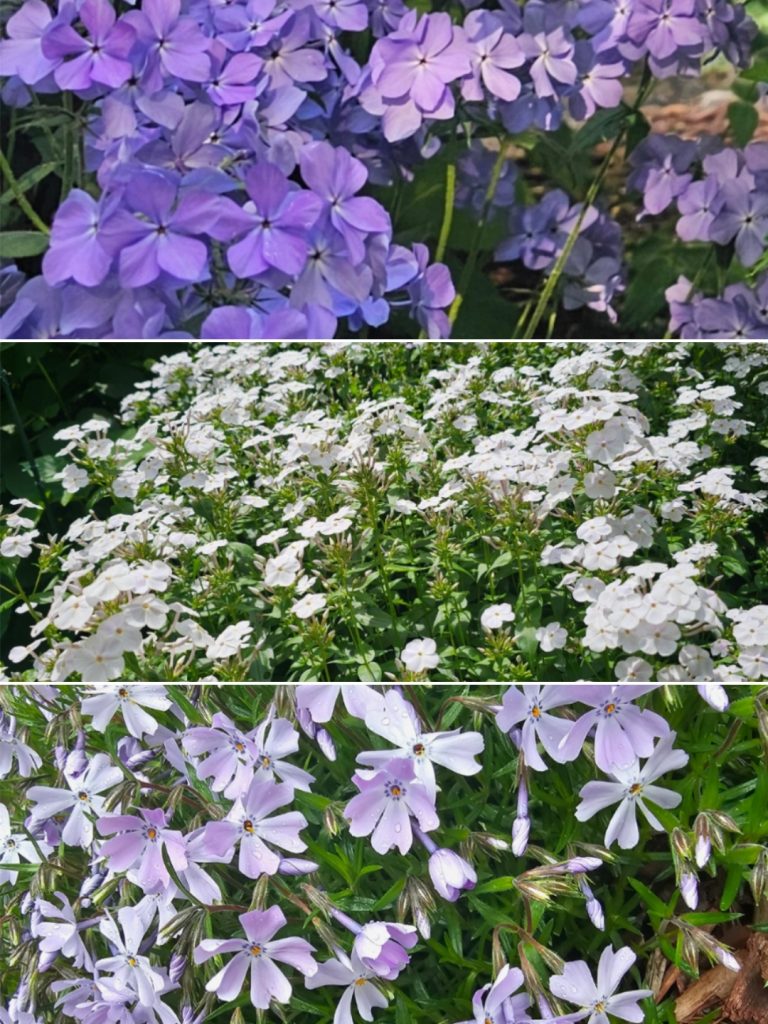


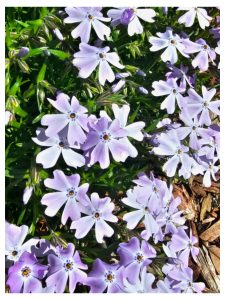
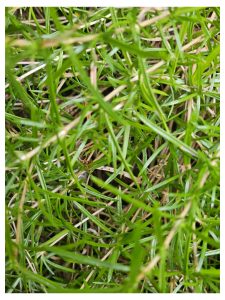
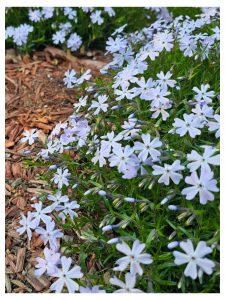

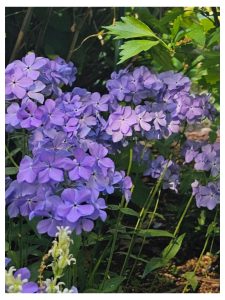
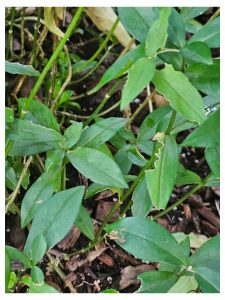

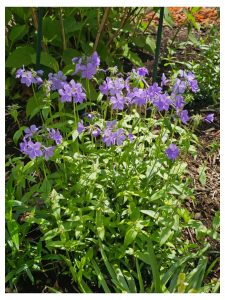
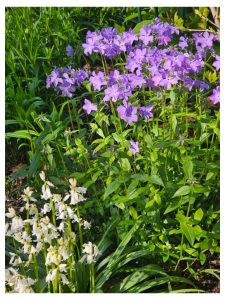

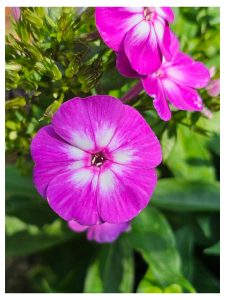
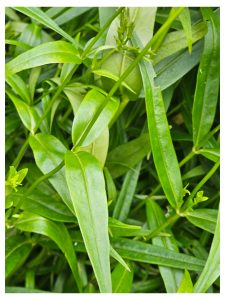
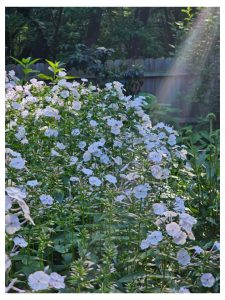
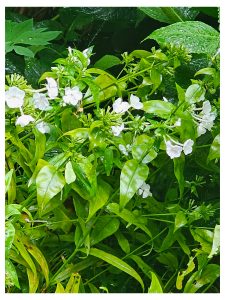
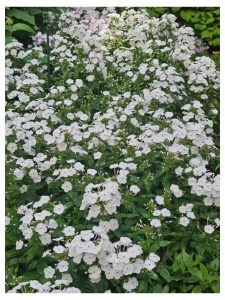
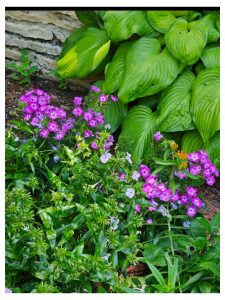
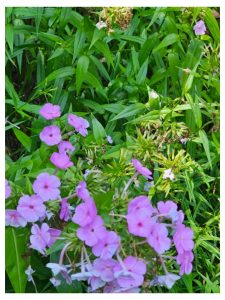
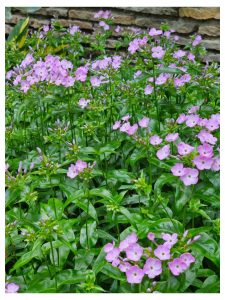
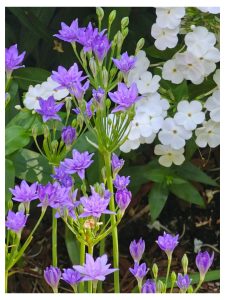
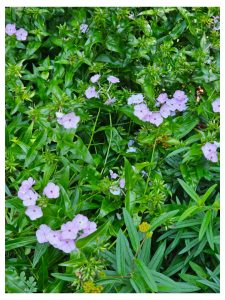
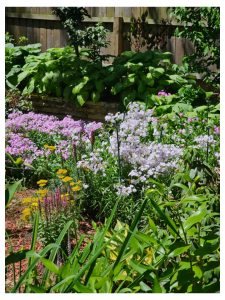







Thanks for all the great information. I have an old patch of phlox that I love. They seem to thrive in spite of me.
Thanks for reading the article, Kevin. I’m glad you found the information useful. It’s wonderful that you’ve got a patch of these beautiful plants persisting in your garden. I’m certain that they’re very happy there. Thanks again, Kevin!
Awesome article!
Very interesting and informative.🌸🌸🌸
I’m happy you liked this one, Roxxy – thank you so much! I appreciate your reading it, and I’m grateful for your very kind words. Thank you again, Roxxy!
All I could ever want to know about Phlox. Great information and insights.
Many thanks, Rick. I really appreciate your reading it, and I’m grateful for your kind words. It’s actually a really interesting plant genus with a lot of beautiful species and subspecies. I love having them in my garden. Thanks once again, Rick!